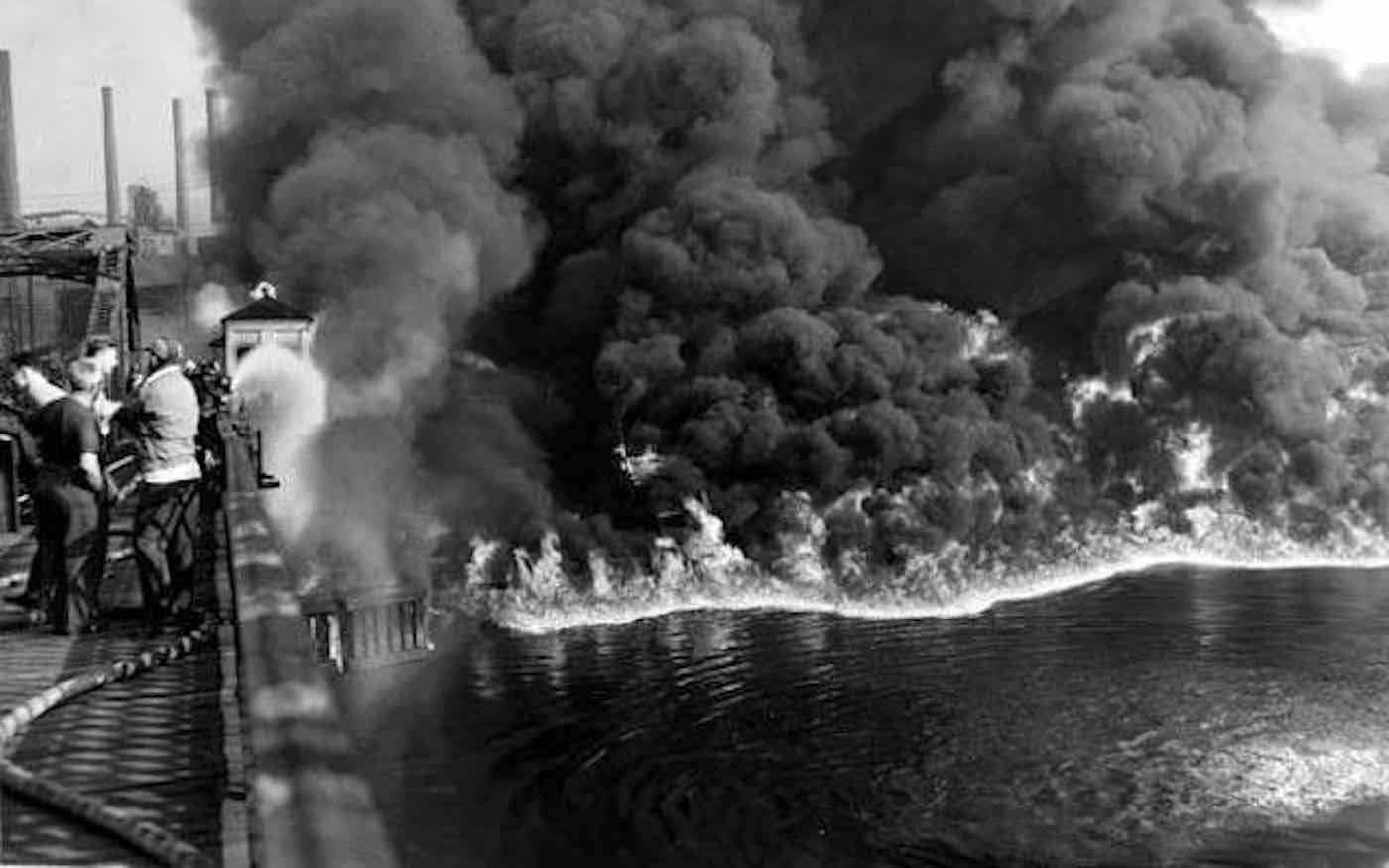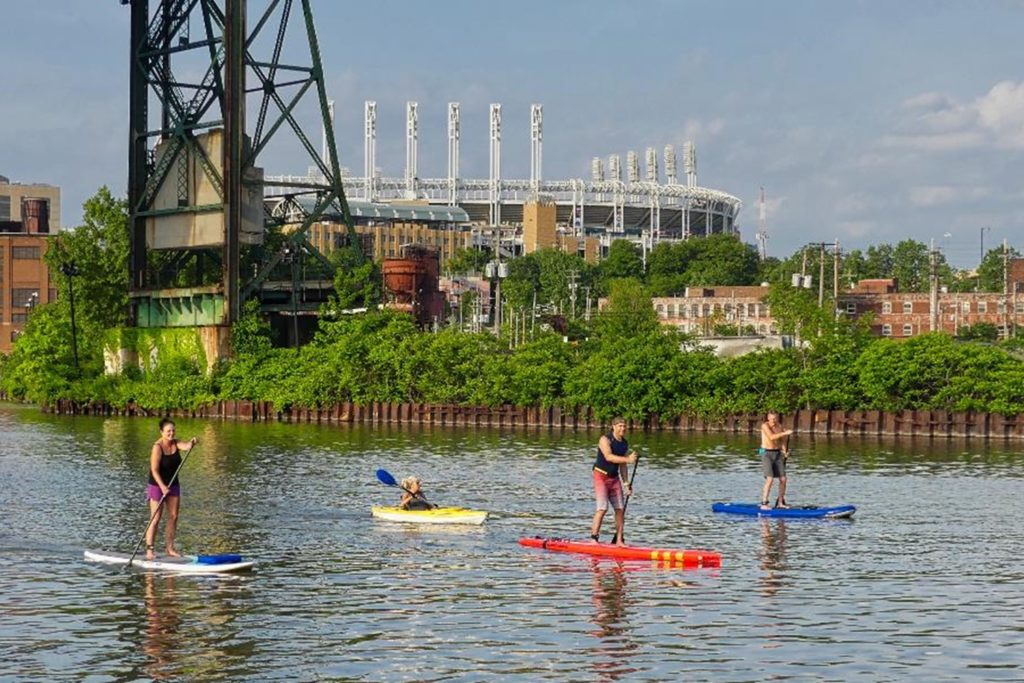What the Cuyahoga River Fire says about the past and maybe the future

Fifty years ago this week the Cuyahoga River caught fire in downtown Cleveland.
Observers of U.S. water policy and environmentalism more generally have been celebrating the fire’s golden anniversary all year, because three years after the Cuyahoga River burned, Congress passed the Clean Water Act. The Safe Drinking Water Act followed two years later. The Cuyahoga River Fire is a textbook example of what political scientists call focusing events: high-profile occurrences that suddenly put previously obscure issues onto the public policy agenda.
The 1969 fire is rightly iconic today, but many forget that it was the twelfth time that the river burned. Why did the 1969 fire catch the public imagination? The truth is that nobody knows. But it did, and it changed the way Americans think about water pollution. The fire presaged a series of laws that fundamentally changed the regulation of water pollution in the United States, invested hundreds of billions in infrastructure, catalyzed new technology, and built a generation of professionals dedicated to protection of the nation’s waters.
A new focus
A year ago I called the Flint Water Crisis the Cuyahoga River Fire of our generation. Flint has changed the way that Americans everywhere think about water infrastructure. As with the 1969 Cuyahoga River Fire, Flint wasn’t the first, wasn’t the worst, and wasn’t the biggest drinking water disaster in recent U.S. history, but it’s the one that caught the public imagination.
The Flint story wasn’t just about water chemistry and failing infrastructure—it was also about bureaucratic organizations and partisan politics. And it was about poverty and race: Flint showed America that water infrastructure is an environmental justice issue. That’s expanded the political coalition focused on water infrastructure. There’s a growing consensus that existing infrastructure funding arrangements are failing.
I’ve worked on water system management, regulation, and finance for more than 20 years and have never seen this kind of public attention to the issue. As recently as two years ago I dismissed the idea of a trillion-dollar federal program for water infrastructure as politically unviable. But something has shifted. Last month Congressional leaders and the president began sketching out a $2 trillion infrastructure package—with potentially hundreds of billions for water, sewer, and stormwater systems.
Those talks have broken down, but the fact that they were even happening suggest that we may be an election away from a major federal investment in infrastructure. Whether it’s next year or two years from now, it looks like Washington may soon be raining infrastructure money. That’s music to the ears of lots of activists who cry out that an injection of federal money is needed to fix America’s water systems.
Recovery & reform
Today people paddle their kayaks on the Cleveland riverfront and safely eat the fish they catch there. If the problems weren’t too big then, they surely aren’t too big today.

To be honest, I was a little relieved when negotiations between the White House and Congress faltered last month, because the breakdown gives us a chance to pause, take a deep breath, and think systemically. Today, the principal barriers to progress in the water sector are not environmental or technological—they are political, social, and economic. Accordingly, a big federal funding package can and should be used as leverage to reform the institutions that govern water in the United States.
Recently I was asked to speak about water infrastructure at the University of Rhode Island’s Metcalf Institute. With the Cuyahoga River Fire’s golden anniversary on my mind, I proposed five broad reforms to the U.S. water sector that ought to accompany any big federal program. They are:
- Consolidation / Regionalization
- Regulatory Equality & Transparency
- Technological Investment
- Human Capital
- Water Equity
Later this week I’ll start a series of posts elaborating on these to help get a deeper conversation going. Since this is a blog, I’m going to breeze by a great deal of detail and keep things at a 30,000-foot level. But each proposal is rooted in empirical research, each part is ambitious, but also technically and politically feasible. Over the next 2-3 years we have a once-in-a-generation opportunity to rebuild and reform water governance. Let’s make the most of it.
___

Great piece, but…
The first picture you posted in this blog entry is NOT the Cuyahoga River in 1969. It was the a photo taken of the Moscow River in Russia in 2015, wherein an underwater oil pipeline was breached and caused an explosion. Please engage in proper research when selecting a photo- do your best to not spread disinformation 🙂
Source:
https://www.express.co.uk/news/world/598110/Fire-Moscow-River-Russia-nuclear-war-smokes-plume
Egad! Looks like you’re right. I was misled by another blogger. I’ve corrected the picture and sacked the fact-checking staff. Thanks for the praise for the prose and the correction on the photo.